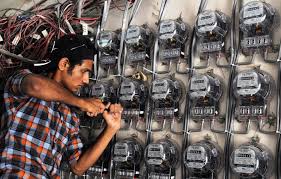Doha February 7 2022: When Qatar escalated an already ambitious LNG expansion program in 2019, record volumes of production from other global participants were already coming online, raising doubts about the need for more supplies when prices were already depressed. Just three years later, with spot prices near record highs, the Middle East producer could be having the last laugh.
Qatar’s Energy Minister Saad al-Kaabi has met with officials from Pakistan, the UK, the EU and Italy in recent months as demand gets a boost from the threat of supply disruptions due to Russia-Ukraine geopolitical tensions and fears of a cold winter in Europe. The country’s ruling emir also met US President Joe Biden in Washington Jan. 31 amid the developments. After meeting with the EU’s Energy Commissioner Kadri Simson, Kaabi said Feb. 1 that Qatar stands ready to support gas partners “in times of need.”
A L S O || R E A D
Iran heads to become gasoline importer, ready to boost oil output
“Qatar, as one of the world’s largest LNG exporters, is getting attention, but the fact is that, like the US and Australia, they do not have significant spare capacity to boost absolute supply,” said Luke Cottell, team lead, EMEA LNG, at S&P Global Platts Analytics. “The high spot environment at present may help them sign additional long term oil indexed contracts if end-users seek to remove exposure to volatile, high spot prices. But a prolonged period of high prices could also lead to gas’s role in the Asian energy mix being called into question due to uncompetitive economics, and thus subdue potential long term demand growth,” he added.
The Platts JKM, the benchmark price for spot LNG in northeast Asia, hit a record high $56.33/MMBtu on Oct. 6, 2021, and was at $27.924/MMBtu on Jan. 31, still about three times higher than at the end of January 2021.
When Qatar announced plans in 2019 to hike its North Field LNG production capacity by 64% through seven years to 126 million mt by 2026, Kaabi had told Platts that he was unconcerned by the price outlook given Qatar’s position as a low-cost producer of gas.
“Demand for gas is going to be there for a long time,” he said at the time. “The issue is that if the price is so low it will force the higher cost people to shut down.”
The global LNG market was then seen saturated, at least into the middle of the 2020s.
Qatar’s current LNG export capacity is 106 Bcm and LNG exports are forecast to be 107 Bcm in 2022, with Asian importers holding contracts for 75 Bcm of supply, or 71% of 2022 exports, according to Platts Analytics. In the second quarter, Asian end-users typically lower nominations on contractual volumes due to weaker seasonal demand, opening the possibility of extra supplies being made available elsewhere. Qatar could also delay regular maintenance during Q2, potentially boosting deliveries to Europe, Cottell said.
Qatar is getting all the attention in a time of shortage because other producers such as the US and Australia involve various competitors, while Qatar’s production is controlled by a single supplier, according to Siamak Adibi, head of FGE’s Middle East gas team.
QatarEnergy, via Qatar Gas, is also the biggest supplier to Europe, with 2021 shipments down 27% on the year due to higher spot prices in Asia, drawing more supplies to Asia, he said.
“The Asian LNG demand growth was quite strong and JKM was traded higher than TTF so LNG netbacks from Asia for Qataris became more attractive,” he said.
At the most, Qatar may be able to boost LNG supplies to Europe in 2022 by 3 million mt (4.05 Bcm) or 4 million mt, to 20-21 million mt, Adibi said.
This is despite European gas prices reaching unprecedented highs in recent months, with the benchmark TTF day-ahead gas price hitting an all-time high of Eur182.78/MWh (equivalent to over $60/MMBtu) on Dec. 21, a rise of 985% year on year, according to Platts price assessments. Prices have cooled since but remain at historic highs, with the TTF day-ahead contract assessed Feb. 2 at Eur76.18/MWh ($25.58/MMBtu), still a year-on-year increase of 320%.
In contrast, Russia’s annual LNG supply to Europe was around 120 Bcm in 2021, against Qatar’s total LNG exports of about 107 Bcm, according to Platts Analytics.
“Qatar has made the right decision to develop North Field and they made their decision at the right time,” Adibi said. “Why should Qatar worry about LNG prices or about not having long term commitments for new trains? They have their own finance and can move ahead with construction of new trains. Any market glut and lower prices will put pressure on other aspiring LNG projects, particularly greenfield projects in higher cost locations such as the US, Australia and Africa.”
Qatar is eager to develop its gas deposits as quickly as possible as customers turn to cleaner fuels, possibly making North Field not needed, Adibi said. The North Field East LNG trains are under construction and they probably need at least four years to be put into operation, he said.
Qatar enjoys some of the lowest production costs in the world, with an estimated long-run breakeven cost of new expansions at less than $5/MMBtu landed into Asia, according to Platts Analytics. Spot price gains are expected to peak in 2022 with a JKM price averaging $21.58/MMBtu, before falling to $6.49/MMBtu by 2027 after new supplies come online in Qatar, Russia and the US, it estimated.
Qatar’s decision in 2019 to accelerate its expansion “looks like good timing,” although it was unlikely the expansion can be completed much earlier than planned, said Robin Mills, CEO of Dubai-based Qamar Energy.
“They will find it much easier to sign long-term contracts at good prices. The high prices are certainly encouraging new final investment decisions in the US, Australia and East Africa.”










